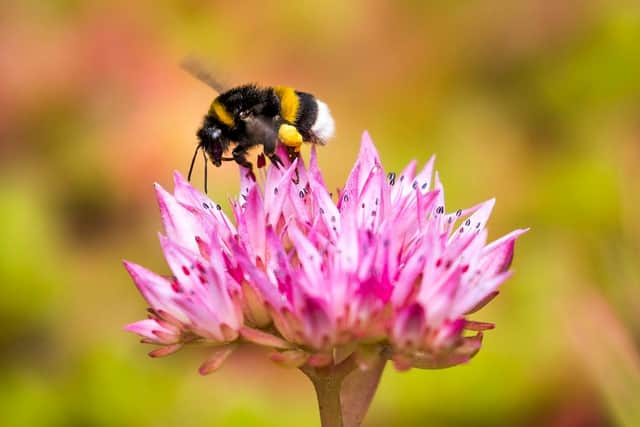How can you protect bees from extinction through gardening? Expert delves into the ways gardening can help bees
For a myriad of reasons including agricultural pressures, the widespread use of chemical pesticides and loss of habitat, bees are quickly decreasing in numbers.
The Yorkshire region is well known for its agricultural contribution and six Yorkshire Water funded £30,000 in November 2021 for a Bee Together project in partnership with Yorkshire Dales Millennium Trust.
Advertisement
Hide AdAdvertisement
Hide AdAccording to Liz Broadbent, the company director and lead planting designer of GardenWild, a service based in Harrogate, we can provide a continual food source for bees and therefore allowing them to thrive, by simply taking up gardening.


“Urban gardens are never going to be able to replace the wild habitat that these insects have lost but we can try and mitigate the effect,” she said.
“Flowers produce nectar and pollen, which is the bees’ food; in turn the bee carries the pollen collected from the plant to other plants, enabling the reproduction process that results in a fruit.
“Gardens with high nectar and pollen-producing plants provide an excellent alternative habitat and are a vital food source for bees.
Advertisement
Hide AdAdvertisement
Hide Ad“The main aim is to provide a continual food source for the bees; we achieve this by planning to have different plants that are flowering all year round.”
Large flowering trees such as willow, maple, horse chestnut and fruit trees are considered the best source of food for bees due to their abundance of nectar and pollen.
However, even if you don’t have room for a large tree, there are smaller shrubs and perennial ornamental plants you can use as alternatives that are crucial for bees, Ms Broadbent assures.
Her top tips for using the green-fingered hobby as a lifeline for bees is:
- Grow early spring bulbs to cover the food gap.
Advertisement
Hide AdAdvertisement
Hide Ad- You can grow catmints, lavender, foxgloves and salvias as bees love the colour purple.
- Choose flowers that have a single layer of petals which will be easy to access by bees and avoid more showy double blooms.
- An ivy left to flower or a winter honeysuckle can extend the season well into the winter when other food sources are scarce.
- Provide a water source that is set up to prevent bees from drowning.
Advertisement
Hide AdAdvertisement
Hide Ad- Encourage your neighbours to avoid using pesticides and herbicides in their garden.
- Let a section of your lawn go wild; flowering plants will grow there and it provides a habitat for bumble bees. Don’t cut until late spring.
Comment Guidelines
National World encourages reader discussion on our stories. User feedback, insights and back-and-forth exchanges add a rich layer of context to reporting. Please review our Community Guidelines before commenting.